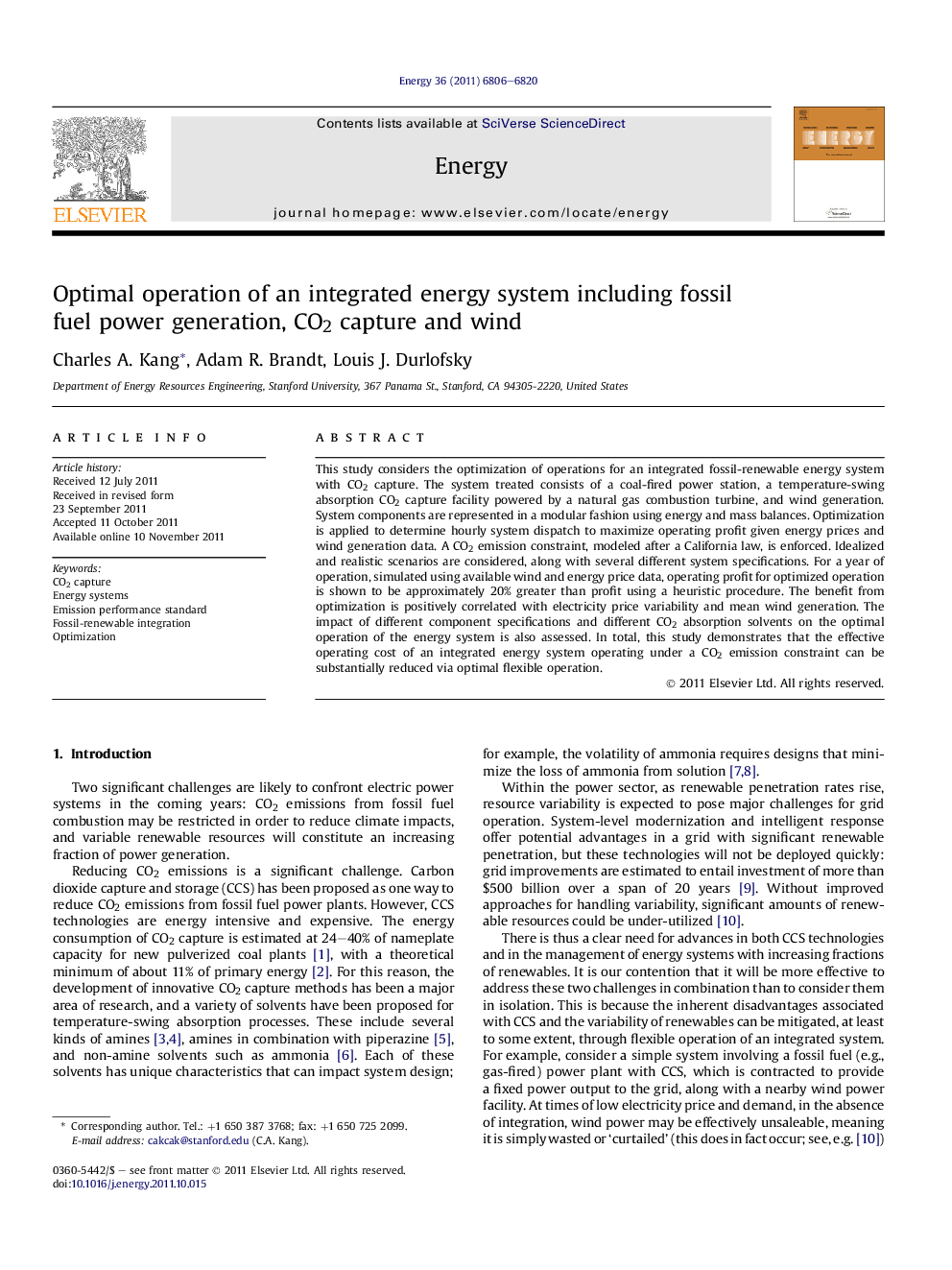| Article ID | Journal | Published Year | Pages | File Type |
|---|---|---|---|---|
| 1734049 | Energy | 2011 | 15 Pages |
This study considers the optimization of operations for an integrated fossil-renewable energy system with CO2 capture. The system treated consists of a coal-fired power station, a temperature-swing absorption CO2 capture facility powered by a natural gas combustion turbine, and wind generation. System components are represented in a modular fashion using energy and mass balances. Optimization is applied to determine hourly system dispatch to maximize operating profit given energy prices and wind generation data. A CO2 emission constraint, modeled after a California law, is enforced. Idealized and realistic scenarios are considered, along with several different system specifications. For a year of operation, simulated using available wind and energy price data, operating profit for optimized operation is shown to be approximately 20% greater than profit using a heuristic procedure. The benefit from optimization is positively correlated with electricity price variability and mean wind generation. The impact of different component specifications and different CO2 absorption solvents on the optimal operation of the energy system is also assessed. In total, this study demonstrates that the effective operating cost of an integrated energy system operating under a CO2 emission constraint can be substantially reduced via optimal flexible operation.
► We model an integrated energy system comprising fossil fuel power generation with CO2 capture and wind subject to a CO2 emission constraint. ► We apply formal optimization techniques to system operations. ► Optimized dispatch produced about 20% more profit than heuristic dispatch. ► Optimization benefit is correlated with electric price variation and wind generation. ► The approach developed is applicable to a wide range of energy systems implementing CO2 capture.
